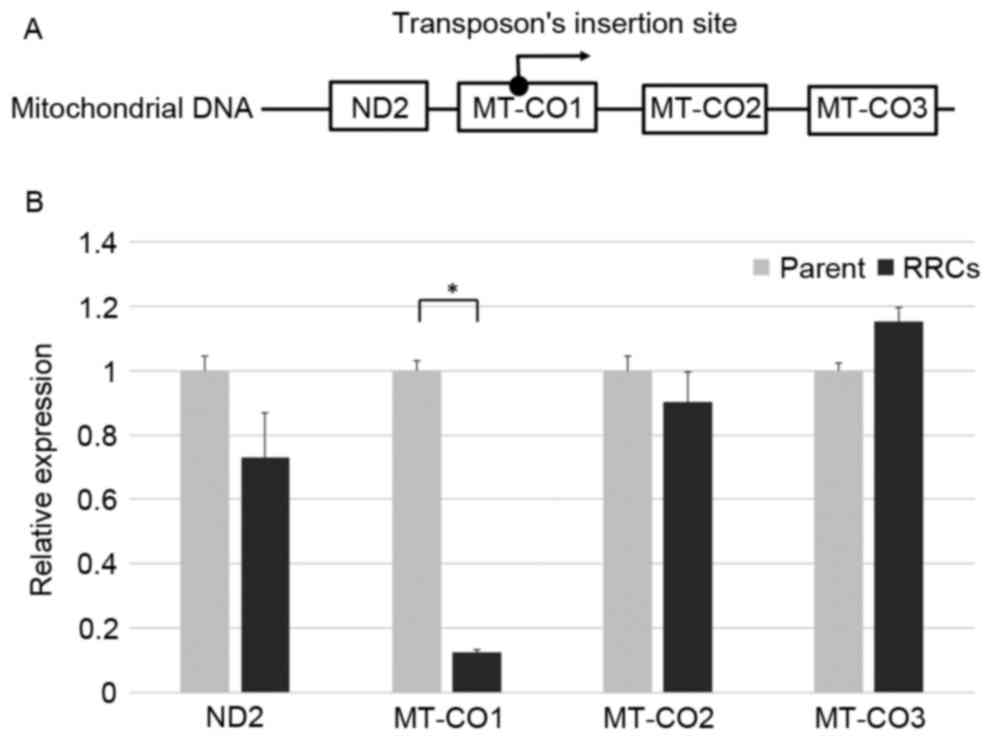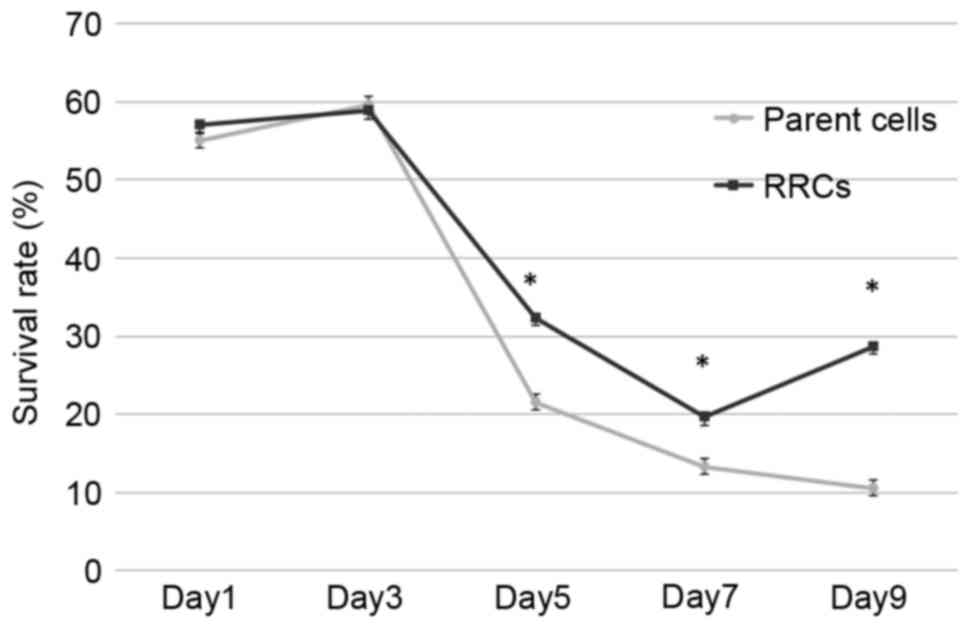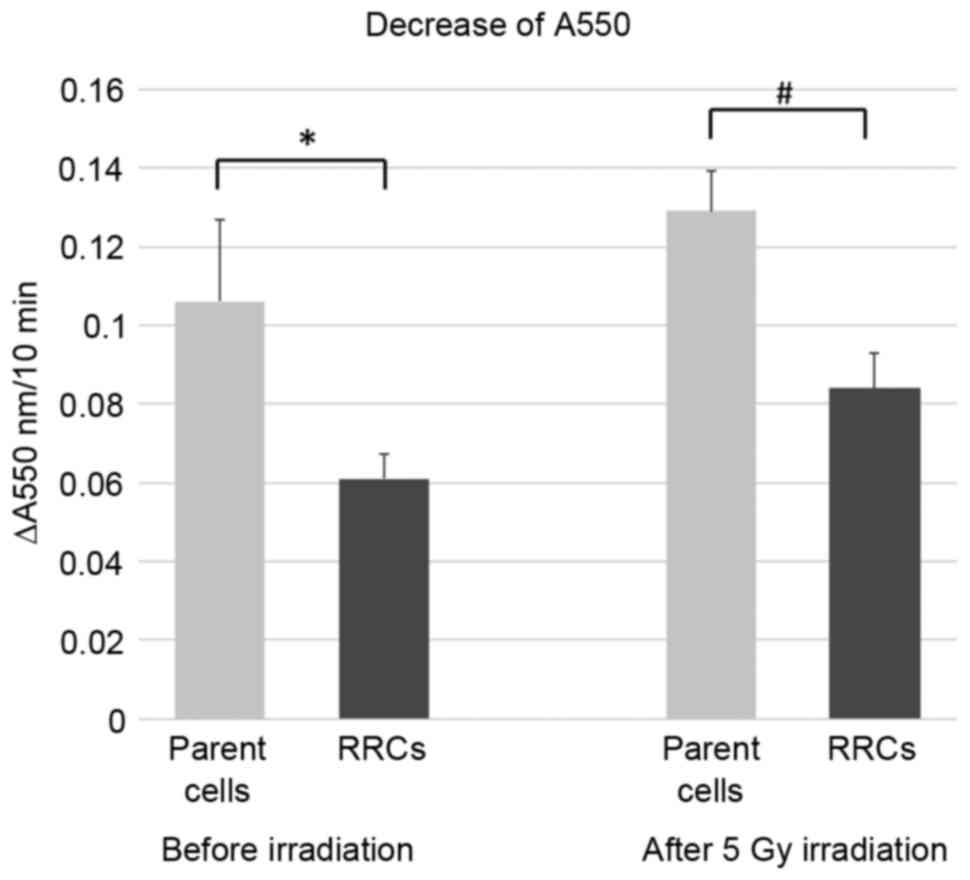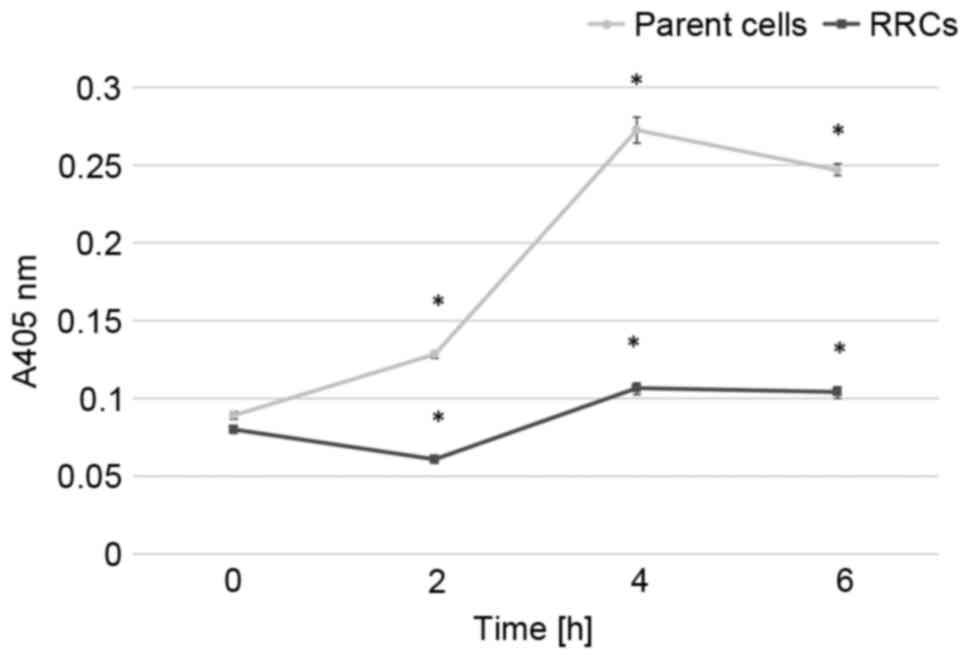|
1
|
Ishida K, Ando N, Yamamoto S, Ide H and
Shinoda M: Phase II study of cisplatin and 5-fluorouracil with
concurrent radiotherapy in advanced squamous cell carcinoma of the
esophagus: A Japan Esophageal Oncology Group (JEOG)/Japan Clinical
Oncology Group trial (JCOG9516). Jpn J Clin Oncol. 34:615–619.
2004. View Article : Google Scholar : PubMed/NCBI
|
|
2
|
Guo W and Jiang YG: Current gene
expression studies in esophageal carcinoma. Curr Genomics.
10:534–539. 2009. View Article : Google Scholar : PubMed/NCBI
|
|
3
|
Fukuda K, Sakakura C, Miyagawa K, Kuriu Y,
Kin S, Nakase Y, Hagiwara A, Mitsufuji S, Okazaki Y, Hayashizaki Y
and Yamagishi H: Differential gene expression profiles of
radioresistant oesophageal cancer cell lines established by
continuous fractionated irradiation. Br J Cancer. 91:1543–1550.
2004. View Article : Google Scholar : PubMed/NCBI
|
|
4
|
Ogawa R, Ishiguro H, Kuwabara Y, Kimura M,
Mitsui A, Mori Y, Mori R, Tomoda K, Katada T, Harada K and Fujii Y:
Identification of candidate genes involved in the radiosensitivity
of esophageal cancer cells by microarray analysis. Dis Esophagus.
21:288–297. 2008. View Article : Google Scholar : PubMed/NCBI
|
|
5
|
Chen L, Stuart L, Ohsumi TK, Burgess S,
Varshney GK, Dastur A, Borowsky M, Benes C, Lacy-Hulbert A and
Schmidt EV: Transposon activation mutagenesis as a screening tool
for identifying resistance to cancer therapeutics. BMC Cancer.
13:932013. View Article : Google Scholar : PubMed/NCBI
|
|
6
|
Tsutsui M, Kawakubo H, Hayashida T, Fukuda
K, Nakamura R, Takahashi T, Wada N, Saikawa Y, Omori T, Takeuchi H
and Kitagawa Y: Comprehensive screening of genes resistant to an
anticancer drug in esophageal squamous cell carcinoma. Int J Oncol.
47:867–874. 2015.PubMed/NCBI
|
|
7
|
Kadenbach B, Jarausch J, Hartmann R and
Merle P: Separation of mammalian cytochrome c oxidase into
13 polypeptides by a sodium dodecyl sulfate-gel electrophoretic
procedure. Anal Biochem. 129:517–521. 1983. View Article : Google Scholar : PubMed/NCBI
|
|
8
|
Weishaupt A and Kadenbach B: Selective
removal of subunit VIb increases the activity of cytochrome
c oxidase. Biochemistry. 31:11477–11481. 1992. View Article : Google Scholar : PubMed/NCBI
|
|
9
|
Pradelli LA, Bénéteau M and Ricci JE:
Mitochondrial control of caspase-dependent and -independent cell
death. Cell Mol Life Sci. 67:1589–1597. 2010. View Article : Google Scholar : PubMed/NCBI
|
|
10
|
Brown GC and Borutaite V: Regulation of
apoptosis by the redox state of cytochrome c. Biochim
Biophys Acta. 1777:877–881. 2008. View Article : Google Scholar : PubMed/NCBI
|
|
11
|
Pan Z, Voehringer DW and Meyn RE: Analysis
of redox regulation of cytochrome c-induced apoptosis in a
cell-free system. Cell Death Differ. 6:683–688. 1999. View Article : Google Scholar : PubMed/NCBI
|
|
12
|
Suto D, Sato K, Ohba Y, Yoshimura T and
Fujii J: Suppression of the pro-apoptotic function of cytochrome
c by singlet oxygen via a haem redox state-independent
mechanism. Biochem J. 392:399–406. 2005. View Article : Google Scholar : PubMed/NCBI
|
|
13
|
Borutaite V and Brown GC: Mitochondrial
regulation of caspase activation by cytochrome oxidase and
tetramethylphenylenediamine via cytosolic cytochrome c redox
state. J Biol Chem. 282:31124–31130. 2007. View Article : Google Scholar : PubMed/NCBI
|
|
14
|
Kim R, Emi M and Tanabe K:
Caspase-dependent and -independent cell death pathways after DNA
damage (Review). Oncol Rep. 14:595–599. 2005.PubMed/NCBI
|
|
15
|
Achary MP, Jaggernauth W, Gross E, Alfieri
A, Klinger HP and Vikram B: Cell lines from the same cervical
carcinoma but with different radiosensitivities exhibit different
cDNA microarray patterns of gene expression. Cytogenet Cell Genet.
91:39–43. 2000. View Article : Google Scholar : PubMed/NCBI
|
|
16
|
Huang TS, Myklebust LM, Kjarland E,
Gjertsen BT, Pendino F, Bruserud Ø, Døskeland SO and Lillehaug JR:
LEDGF/p75 has increased expression in blasts from
chemotherapy-resistant human acute myelogenic leukemia patients and
protects leukemia cells from apoptosis in vitro. Mol Cancer.
6:312007. View Article : Google Scholar : PubMed/NCBI
|
|
17
|
Inoue K, Nakada K, Ogura A, Isobe K, Goto
Y, Nonaka I and Hayashi JI: Generation of mice with mitochondrial
dysfunction by introducing mouse mtDNA carrying a deletion into
zygotes. Nat Genet. 26:176–181. 2000. View
Article : Google Scholar : PubMed/NCBI
|
|
18
|
Aichler M, Elsner M, Ludyga N, Feuchtinger
A, Zangen V, Maier SK, Balluff B, Schöne C, Hierber L, Braselmann
H, et al: Clinical response to chemotherapy in oesophageal
adenocarcinoma patients is linked to defects in mitochondria. J
Pathol. 230:410–419. 2013. View Article : Google Scholar : PubMed/NCBI
|
|
19
|
Oliva CR, Nozell SE, Diers A, McClugage SG
III, Sarkaria JN, Markert JM, Darley-Usmar VM, Bailey SM, Gillespie
GY, Landar A and Griguer CE: Acquisition of temozolomide
chemoresistance in gliomas leads to remodeling of mitochondrial
electron transport chain. J Biol Chem. 285:39759–39767. 2010.
View Article : Google Scholar : PubMed/NCBI
|
|
20
|
Oliva CR, Moellering DR, Gillespie GY and
Griguer CE: Acquisition of chemoresistance in gliomas is associated
with increased mitochondrial coupling and decreased ROS production.
PLoS One. 6:e246652011. View Article : Google Scholar : PubMed/NCBI
|
|
21
|
Lightowlers RN, Chinnery PF, Turnbull DM
and Howell N: Mammalian mitochondrial genetics: Heredity,
heteroplasmy and disease. Trends Genet. 13:450–455. 1997.
View Article : Google Scholar : PubMed/NCBI
|
|
22
|
Shibata T and Ling F: DNA recombination
protein-dependent mechanism of homoplasmy and its proposed
functions. Mitochondrion. 7:17–23. 2007. View Article : Google Scholar : PubMed/NCBI
|














